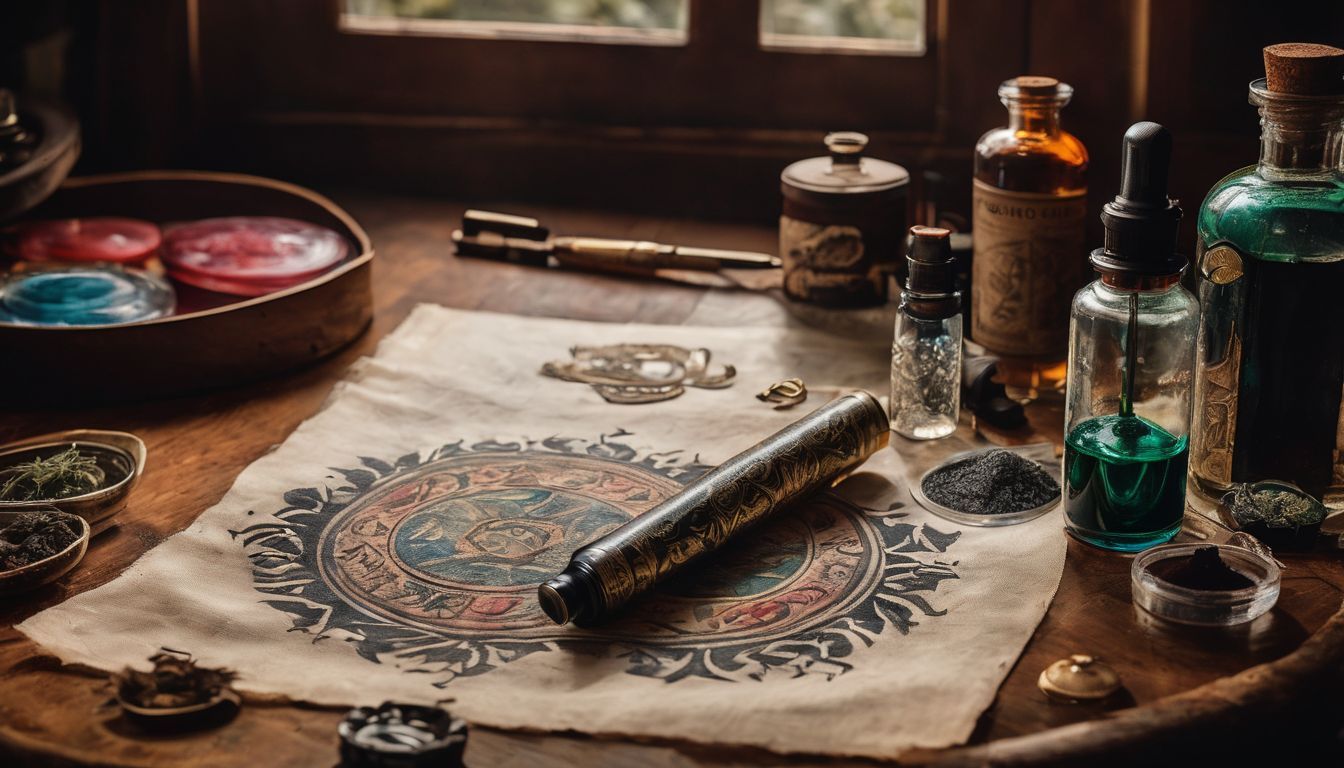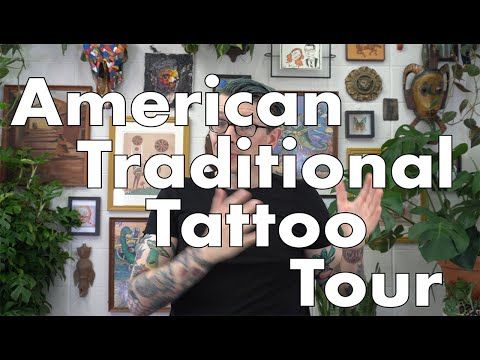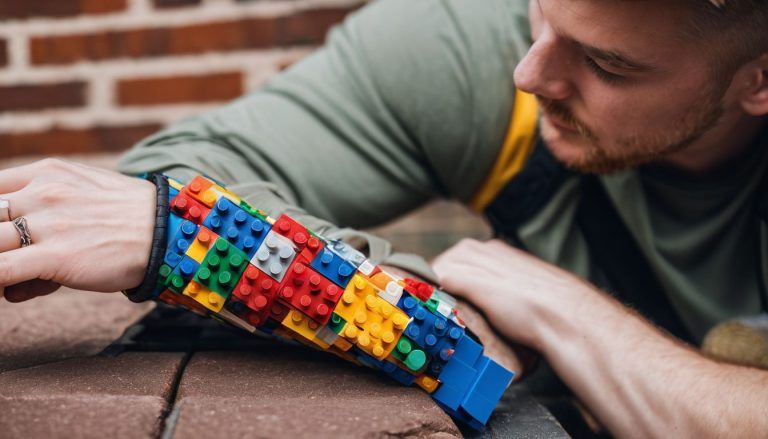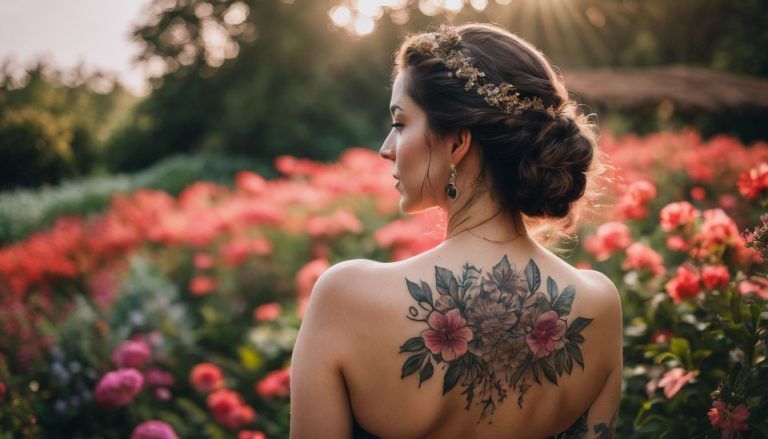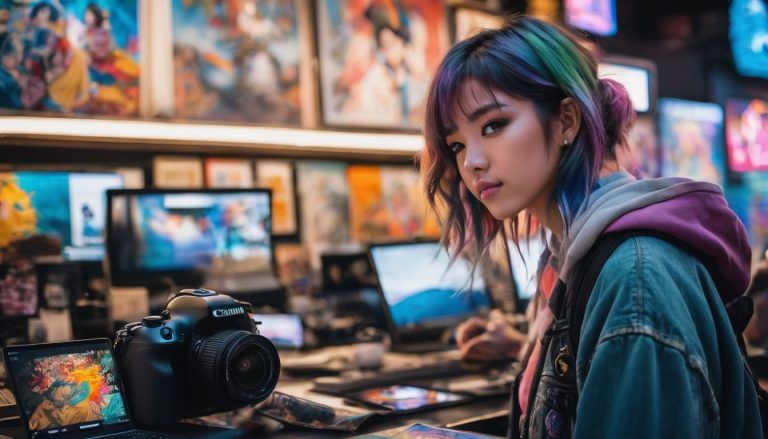Exploring Traditional Tattoo Symbols and Meanings
Deciding on a tattoo can be tough, especially when you’re searching for one with depth and history. Tattoos have been telling stories for centuries, often holding rich symbolic meaning.
This article will uncover the meanings behind traditional tattoo symbols to guide your choice with knowledge and confidence. Discover the art inked in tradition!
Key Takeaways
- Traditional tattoo symbols like swallows, anchors, and dragons carry deep cultural meanings representing loyalty, stability, and strength.
- The styles and techniques of traditional tattooing have evolved over time with American traditional featuring bold lines and bright colors, while Japanese tattoos focus on detailed storytelling imagery.
- New School and Chicano tattoos are modern offshoots of traditional styles that incorporate contemporary influences like graffiti art or Mexican-American culture into their designs.
- Proper aftercare is essential for the healing of traditional tattoos; guidelines include gentle cleaning, moisturizing, avoiding sunlight exposure, and wearing loose clothing over the area.
- Top artists such as Sailor Jerry and Bert Grimm have shaped the world of traditional tattoos with their unique symbols which continue to inspire new trends in the tattooing community.
History and Origins of Traditional Tattooing
Traditional tattooing has a rich history dating back centuries, with notable artists like Sailor Jerry and Bert Grimm pioneering the American traditional style. This art form has evolved from ancient cultural traditions to become a popular form of body art today.
Founding artists and their styles
Sailor Jerry stands out as a pioneering figure in the world of traditional tattoos. His unique style set the stage for what would become iconic symbols of American Traditional tattooing, with bold lines and a limited color palette.
He drew inspiration from his travels at sea, creating classic designs such as swallows, anchors, and nautical stars that symbolize adventure and determination.
Across the ocean in Japan, artists like Horiyoshi III carried on the legacy of Japanese traditional tattooing. They meticulously crafted full-body designs known as irezumi, which often featured dragons, koi fish, and tigers wrapped elegantly around clients’ forms.
These intricate tattoos told stories of folklore and paid homage to cultural heritage using rich symbolism deeply rooted in ancient traditions.
Evolution of traditional tattooing
Traditional tattooing has undergone a significant evolution over time, with various cultural influences shaping its development. From early tribal tattoos to the emergence of American traditional and Neo-traditional styles, this art form has adapted to reflect the changing values and aesthetics of different eras.
The use of specific motifs and symbols, such as anchors, swallows, daggers, and roses, has persisted through these evolutionary stages while embracing new interpretations that resonate with contemporary audiences.
These symbols have seamlessly transitioned from their historical origins to modern iterations while retaining their timeless appeal. As traditional tattooing continues to evolve, it remains deeply rooted in symbolism and cultural significance.
Traditional Tattoo Symbols and Their Meanings
Many traditional tattoo symbols carry deep cultural and symbolic meanings. From anchors to roses, each motif tells a unique story and reflects the heritage of the wearer. Explore the significance behind these timeless designs and gain insight into the rich history of traditional tattooing.
Common motifs and their significance
Traditional tattoo motifs hold deep significance and symbolism, reflecting various emotions, experiences, and cultural meanings. These timeless designs convey powerful messages through their imagery:
- Swallows: Symbolize loyalty, love, freedom, and triumph over adversity. In nautical tradition, swallows represented the return home.
- Anchors: Signify stability, hope, and steadfastness in the face of adversity. They also symbolize a connection to the sea and represent a strong foundation.
- Sharks: Symbolize power, strength, fearlessness, and a need for survival. As protectors of sailors at sea in some cultures, they also signify guardianship.
- Hearts: Often stand for love, passion, affection or can represent sorrow when pierced with daggers or broken.
- Dragons: A symbol of protection against evil influences and often embody strength, bravery, wisdom and good fortune.
- Skulls: Often associated with mortality but also signify protection from enemies as well as life’s fleeting nature.
- Panthers: Represent courage and valor due to their fierce reputation; they are symbols of bravery.
Examples of traditional tattoos and their meanings
Classic tattoo designs often carry deep symbolism. For example, the swallow tattoo symbolizes loyalty and love. Anchors are a symbol of stability and strength. Dragons represent power, strength, and good luck. Meanwhile, hearts denote love and passion. Skulls can symbolize mortality or the celebration of life’s fleeting nature. Panthers represent courage and valor while sharks signify adaptability and power in adversity.
Traditional tattoo style guide
Traditional tattoo style encompasses a wide range of iconic motifs, each with its unique cultural significance. From the powerful visuals of American traditional tattoos to the intricate patterns of Japanese traditional tattoos, every style tells a story.
The classic imagery includes swallows symbolizing travel, anchors for stability, and roses representing love or remembrance. Additionally, dragons are emblematic of strength and protection in many traditional tattoo designs.
Neo-traditional tattoos reimagine these timeless symbols with vibrant colors and contemporary flair. Incorporating modern elements while honoring traditional roots, neo-traditional tattoos offer a fresh take on classic designs.
Traditional Tattoo Techniques and Styles
Traditional tattoo techniques and styles encompass a wide range of traditional motifs, from classic American traditional to Japanese traditional. These styles often incorporate bold lines, iconic symbols, and vibrant colors that make them instantly recognizable in the world of tattooing.
Flash and motifs used in traditional tattoos
Traditional tattoo flash and motifs are iconic symbols within the art form, each with its own rich history and significance. The imagery used in traditional tattoos often carries deep meanings, reflecting themes of strength, courage, and resilience. Here are some examples of flash and motifs commonly found in traditional tattoos:
- Swallows: These birds symbolize loyalty and the return home.
- Anchors: Often representing stability and grounding, anchors are a common motif in traditional tattoos.
- Roses: A timeless symbol of love and beauty, roses frequently appear in traditional tattoo designs.
- Daggers: Representing bravery or betrayal, dagger tattoos have a range of emotional connotations.
- Hearts: Symbolizing love and passion, hearts are a prevalent motif in traditional tattoo artwork.
- Dragons: Frequently embodying power and protection, dragons hold significant symbolism in traditional tattoos.
- Skulls: Reflecting mortality and the cycle of life, skulls are a popular motif in classic tattoo designs.
Different styles in traditional tattooing (i.e. American traditional, Japanese traditional, etc.)
American traditional tattoos, also known as old school tattoos, are characterized by bold lines and bright colors. These designs often feature iconic imagery like swallows, anchors, sharks, hearts, dragons, skulls, and panthers.
Each element holds significant symbolism within the American traditional style. On the other hand, Japanese traditional tattoos focus on intricate patterns and detailed storytelling.
These pieces typically incorporate symbols such as koi fish, cherry blossoms, dragons, and waves to convey themes of strength and perseverance.
The various styles in traditional tattooing each carry unique cultural significance and visual characteristics that resonate with individuals seeking to express themselves through timeless art forms.
Offshoot styles like New School and Chicano tattoos
While traditional tattooing has a rich history and diverse styles, offshoot styles like New School and Chicano tattoos have emerged as unique expressions within the tattoo community.
New School tattoos are characterized by bold lines, vibrant colors, exaggerated proportions, and cartoon-like imagery. This style often incorporates elements of graffiti art, comic books, and pop culture references to create eye-catching designs with a modern twist.
On the other hand, Chicano tattoos draw inspiration from Mexican-American culture and feature intricate lettering, religious iconography such as the Virgin Mary or praying hands, as well as elements representing pride in heritage and a sense of belonging.
New School tattoos appeal to those seeking contemporary artwork with playful aesthetics while Chicano tattoos hold deep cultural significance for individuals wishing to honor their heritage through body art.
Taking Care of Your Traditional Tattoo
Proper aftercare is crucial for the healing and longevity of your traditional tattoo, so be sure to follow the guidelines provided by your artist and maintain good hygiene. Understanding proper etiquette in a tattoo shop and being aware of the healing time and cost will help you make the most out of your new ink.
Ready to explore more about traditional tattoo symbols and meanings? Keep reading to discover the artistry behind this timeless form of self-expression.
Tattoo aftercare guidelines
To properly care for your traditional tattoo, follow these steps:
- Gently wash the tattooed area with mild soap and warm water to remove any ointment or blood. Pat it dry with a clean paper towel.
- Apply a thin layer of fragrance-free moisturizer or tattoo-specific ointment to keep the skin hydrated.
- Avoid submerging the tattoo in water, such as swimming pools, hot tubs, or baths, until it’s fully healed.
- Refrain from picking at scabs; let them naturally flake off without interference to prevent scarring.
- Keep the tattoo out of direct sunlight and apply sunscreen after it’s healed to protect it from fading.
- Wear loose clothing over the tattooed area during the healing process to avoid irritation.
Proper etiquette for clients in a tattoo shop
After following the tattoo aftercare guidelines, it’s essential for clients to show proper etiquette when visiting a tattoo shop. When entering the shop, clients should remember to greet the staff and artists respectfully without interrupting ongoing appointments or procedures.
Furthermore, it’s important for clients to communicate openly about their design ideas and preferences while being receptive to professional advice from the artists.
Clients should be mindful of scheduled appointment times and inform the studio if they need to reschedule or cancel. Additionally, respecting the workspace and maintaining personal hygiene are crucial aspects of exhibiting good etiquette in a tattoo shop.
Healing time and cost of traditional tattoos
Traditional tattoos generally take around 2-3 weeks to fully heal, although the initial healing phase lasts about 2 weeks. During this time, it’s crucial to follow proper aftercare guidelines, such as keeping the tattoo clean and moisturized.
As for the cost of traditional tattoos, it varies depending on factors like size, intricacy of design, and artist expertise. Small classic designs may cost around $50-$100 or more while larger pieces with intricate detailing can range from $200-$500 or higher.
It’s important to research different artists and their rates before getting a traditional tattoo to ensure quality work within your budget.
Exploring Modern Traditional Artists and Tattoo Trends
Discover the top traditional tattoo artists and their unique styles, as well as popular traditional tattoo designs and their meanings. Learn about the latest trends in the world of traditional tattooing and how they are evolving with modern influences.
Top traditional tattoo artists and their work
Some top traditional tattoo artists and their work include:
- Sailor Jerry – Known for his iconic old school tattoos, including bold designs such as anchors, swallows, and pin-up girls that hold specific meanings deeply rooted in symbolism and cultural significance.
- Bert Grimm – An influential figure in American Traditional tattooing, renowned for his classic designs like eagles, roses, and military insignias, which symbolize bravery, love, and honor.
- Lyle Tuttle – A pioneer in modern tattooing who has created timeless tattoo designs such as panthers, dragons, and skulls that encompass adventure, exploration, and the spirit of discovery.
- Don Ed Hardy – Recognized for his fusion of traditional Japanese motifs with American Traditional style to create neo-traditional tattoos that blend folklore symbols with a modern edge.
- Norman Collins (Sailor Jerry) – His iconic tattoos often feature imagery associated with the sea and maritime life, such as sharks and mermaids symbolizing strength, protection, and allure with hidden meanings evoking emotions in literature and film.
Popular traditional tattoo designs and their meanings
Exploring Modern Traditional Artists and Tattoo Trends has led to popular traditional tattoo designs gaining significant attention. These designs carry deep meanings and symbolism, making them cherished by many. Here are some popular traditional tattoo designs and their meanings:
- Roses symbolize love, beauty, and passion, but also serve as a reminder of life’s thorns and hardships.
- Anchors represent stability, hope, and being grounded in one’s beliefs or relationships.
- Dragons embody strength, wisdom, power, and protection in many cultures.
- Swallows signify loyalty, freedom, traveling great distances, and returning home safely.
- Hearts reflect love, affection, courage, and the depths of emotions within individuals.
- Sharks denote strength, adaptability, survival instincts, and fearlessness in the face of challenges.
New trends in traditional tattooing
Transitioning from the popular traditional tattoo designs and their meanings, modern trends in traditional tattooing have seen a rise in innovative interpretations of classic motifs.
Traditional symbols like roses, anchors, swallows, and panthers are now being reimagined with vibrant colors, intricate details, and creative compositions. This evolution has led to the emergence of neo-traditional tattoos that blend old-school aesthetics with contemporary flair.
Additionally, artists are incorporating elements from different traditional styles such as Japanese or Chicano into their work to create unique and personalized designs.
Moreover, there is an increasing fusion of traditional tattooing with other artistic movements like illustrative and watercolor styles. This blending has resulted in a fresh take on vintage tattoo symbols while still honoring their historical significance.
Conclusion
Exploring the diverse meanings behind traditional tattoo symbols reveals a rich tapestry of cultural significance and personal expression. Each motif tells a story, evoking emotions and memories that transcend time and place.
From American traditional tattoos to neo-traditional designs, the legacy of these classic symbols continues to inspire new generations of ink enthusiasts. Delving into the world of traditional tattooing unveils an art form steeped in history and brimming with timeless allure.
FAQs
1. What are traditional tattoo symbols?
Traditional tattoo symbols include classic designs like old school tattoos, American traditional tattoos, and Neo-traditional styles that often feature vintage motifs and nostalgic imagery.
2. Can you tell me about the meanings behind traditional tattoos?
Yes, each traditional tattoo has a meaning; for example, a sailor might get an anchor for stability or a lion for courage. The meanings stem from indigenous art to antique patterns that reflect personal stories or cultural heritage.
3. What’s the difference between a traditional and neo-traditional tattoo?
While both styles draw from retro artwork, a traditional tattoo often refers to old-fashioned American designs with bold lines and bright colors. Neo-traditional tattoos mix these elements with more modern concepts and detailed shading.
4. Where can I find ideas for my own traditional tattoo sleeve?
You can look through collections of timeless ideas in books or online galleries featuring Traditional Tattoo Flash—sheets of pre-designed images—to gather inspiration for your custom sleeve.
5. Are old-school tattoos still popular today?
Absolutely! Old-school tattoos are considered timeless because they carry on the vintage charm and classic symbols that have told stories on skin for generations.

